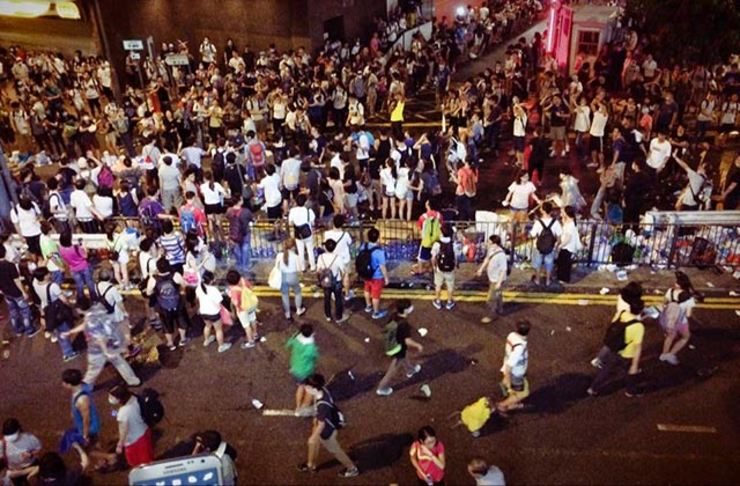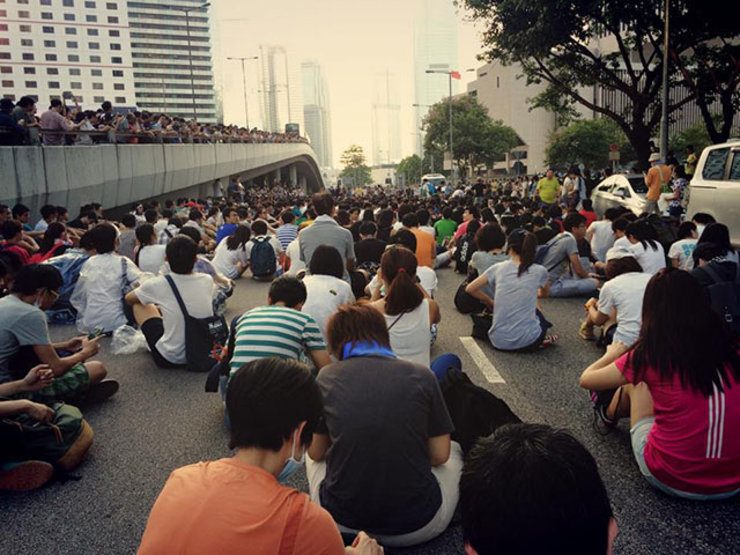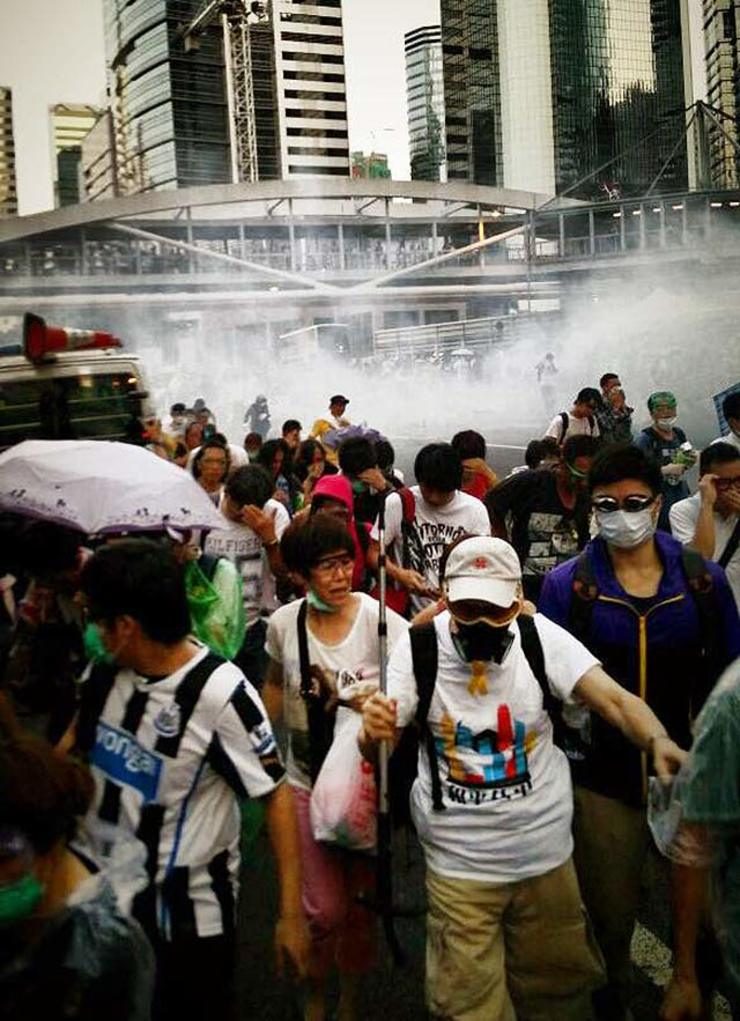SUMMARY
This is AI generated summarization, which may have errors. For context, always refer to the full article.

HONG KONG – I gathered a few essentials – cell phone, notebook, pen, face towel, and goggles – and left my apartment. I met up with my brother Kelvin at Lippo Centre and we walked to the section of the Connaught Road expressway that had been taken over by protestors and regular citizens who supported them. We were about 50 meters from the government offices, the epicenter of a massive student protest and the frontline of a police standoff.
It was 3:45 pm. By then, there were throngs of people all around us, many wearing goggles and raincoats to guard against pepper spray. Some put Saran Wrap around their eye-gear for extra protection. Tanya Chan (陳淑莊), vice chairwoman of the Civic Party, was speaking into a bullhorn. A student wove through the crowd with a loudspeaker broadcasting her words. Chan asked citizens to hold the line outside the Bank of China tower to stop police from advancing. She also warned us about undercover cops collecting intelligence from the crowd. “Strike up a conversation with anyone who looks suspicious,” she said.

From afar, someone yelled: “Saline water! We need saline water!” Other supplies were needed too: face masks, umbrellas, and drinking water. My brother and I went to see what we could do to help. We joined the human chain passing supplies from one side of Connaught Road to the other. They were for student protestors who had been pepper-sprayed by police. The girl next to me, who was about 15, shoved a carton of fresh milk into my hand. “Pass it on,” she said. Milk is supposed to sooth the eyes because it neutralizes the chemicals in the pepper spray. There was order in this chaos: everyone was a commander and everyone was a foot soldier.
We hit a lull in the calls for supplies. I told Kelvin I needed to use the bathroom and we walked to a nearby shopping mall. On our way back, I proposed to grab a few supplies for the frontline. My brother had overheard that saline water was most needed, and so we spent the next 45 minutes scouring Wanchai for pharmacies, because other volunteers had already emptied the shelves in the vicinity.

Tear gas might have been commonplace elsewhere in the world, but it isn’t in Hong Kong. Leung’s decision to deploy it, despite the political price he must pay, suggests that he has been given direct orders from Beijing to do whatever it takes to clear the streets before citizens return to work Monday morning. In so doing, however, he has irreversibly redrawn the relationship between people and government. There is no turning back now – neither for him nor for us.
As night fell, tension rose. My brother and I moved to a footbridge outside the Police Headquarters on the ominously named Arsenal Street. There, high above the ground, we saw a formation of armed riot police advancing steadily from Wanchai toward Admiralty. Lit only by the amber streetlights, the scene was eerily reminiscent of the streets of Beijing on that fateful June night 25 years ago. Many on the bridge spontaneously screamed at the people down below: “Run! Riot police is coming! Run!” That’s when I saw one of the police officers unfold the infamous black banner. Moments later, shots of tear gas began arcing through the dark sky, before clouds of white smoke billowed from the ground. It smelled like something between burned rubber and a very pungent mustard.
Pandemonium ensued. A stranger came up to me and my brother and said, “You two need these,” and handed us two face masks. My eyes started to sting and I put on my goggles. We ran with the retreating crowd and took shelter from the nearby park.
It was 9:30 pm and Kelvin and I agreed that we should heed the student organizers’ warning and leave for our own safety, as there were rumors that riot police would start dispersing the crowd with rubber bullets. Kelvin lives in Wanchai and I, Pokfulam. We said goodbye to each other and parted ways. By then almost every road between Wanchai and Central had been blocked, either by police or by makeshift blockades set up by students. I walked 3 kilometers to Sai Ying Pun, before finding a taxi to take me home.
During my 30-minute walk, a single thought kept running through my head: this is not the Hong Kong I knew. Perhaps, years later, we would all look back on this night and tell ourselves that this was good for us. Like bitter Chinese medicine, what went down today has made us stronger and better. But like bitter Chinese medicine, it was very difficult to swallow.
I got home, which had never felt safer or quieter. I said a prayer for those who had chosen to stay in Admiralty – students who had nothing to defend themselves with but umbrellas and face masks. I took a shower and sat idly in bed. Suddenly, all that had happened in the last 6 hours hit me, as images and sounds finally sank in. I started to sob, and my hands shook despite myself. I wiped my eyes, turned on my computer and wrote this. – Rappler.com
This blog was republished with permission from Jason Y Ng. The author is a Hong Kong-based lawyer and blogger. You can read more from his blog “As I See It” here.
Add a comment
How does this make you feel?
There are no comments yet. Add your comment to start the conversation.